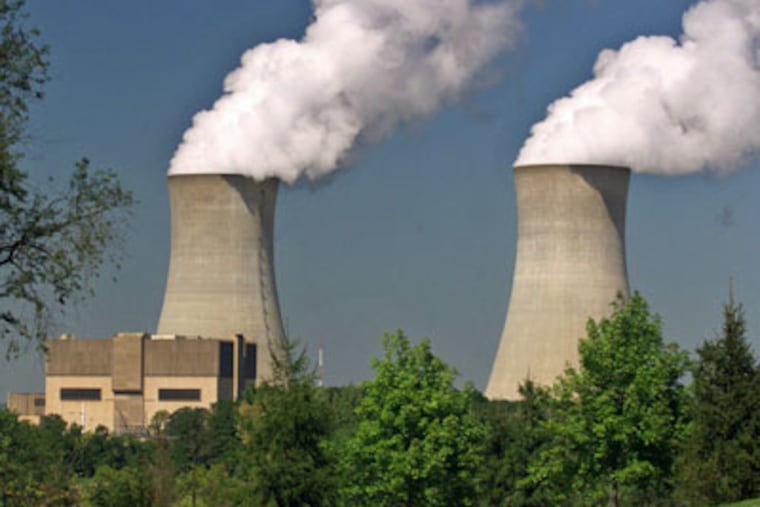Old foes welcome clean fuel
Rising demand for emission-free energy is spurring a nuclear rebirth.

Nuclear energy, a prime source of electricity for Pennsylvania, is finally getting the respect it deserves.
It's not hard to see why: America's power needs continue to grow, and meeting them without harming the environment calls for every available nonpolluting energy source. Nuclear energy is the most dependable and cost-effective such option.
It isn't the only solution, of course. Wind, geothermal, and other renewable energy sources will likely become a bigger part of Pennsylvania's energy portfolio, and America's. But nuclear energy will be expected to shoulder the biggest load.
Because nuclear energy is virtually emissions-free, America's 104 nuclear reactors already account for nearly 75 percent of the country's clean energy, and 93 percent of Pennsylvania's.
Nuclear energy has maintained a strong record of safety, reliability, and efficiency for decades, and Americans increasingly appreciate its environmental and economic benefits. A recent Gallup poll showed that 59 percent of Americans support using nuclear energy to meet the country's energy needs. Support is even higher in Pennsylvania, reaching 82 percent of residents polled last year for the Pennsylvania Energy Alliance.
That support isn't surprising given the benefits of Pennsylvania's nine existing reactors. The plants provide more than a third of the state's annual electricity needs. Last year alone, they helped prevent more than 70 million metric tons of carbon dioxide from entering the atmosphere. State leaders would have had to take all of the state's 5.8 million cars off the road to get the same environmental benefit.
nolead begins
More plants, more jobs
Residents are enjoying these returns because of past investments in nuclear energy. But more investment is needed now. The independent Electric Power Research Institute recently concluded that the nation will need 45 more nuclear plants to meet growing electricity demand and emission reduction targets. That would be on top of plans to aggressively expand wind and solar generation, as well as introduce more efficiency and conservation measures.
To satisfy these demands, the nuclear industry is gearing up for a major expansion, with 25 new reactors on the drawing board and preliminary site work under way in states such as Georgia.
This growth brings with it the promise of much-needed jobs. Facing its highest unemployment in 25 years, Pennsylvania sorely needs such a boost.
Plans are in the works for a new nuclear reactor in Luzerne County, which will create 4,000 construction jobs and 400 permanent positions once it's running, according to operator PPL Corp. These would come on top of 1,600 jobs being created by expansions of nuclear plants in Turtle Creek, Cheswick, and Cranberry Woods.
Each new reactor also generates about $430 million a year in economic output for the local community, according to a report by the Clean and Safe Energy Coalition, a grassroots organization I chair along with former EPA Administrator Christie Whitman.
nolead begins
Dealing with risks
But Pennsylvanians want more than jobs; they want safety. As a cofounder of Greenpeace and one of its leaders during the 1970s and '80s, I know how wary people have been of nuclear energy's risks. Nuclear power was once a litmus test for environmental activists, who were worried about waste and proliferation.
Today, however, the nuclear industry has decades of safe operation under its belt, and last year was the safest to date, according to the Nuclear Regulatory Commission's reactor oversight process. It's the most regulated industry in the United States. Furthermore, nuclear plants in 31 states have stored spent fuel rods successfully, protecting them from contamination, sabotage, and theft.
As the industry works to secure a long-term national repository for nuclear by-products, a broad coalition of energy leaders is lending support. Citing nuclear energy's clean-air benefits, Secretary of Energy Steven Chu announced earlier this year that he is forming a blue-ribbon commission to investigate new ways of managing nuclear waste, including a recycling program that would reduce waste volumes and capture the remaining energy in used fuel.
America needs this kind of commitment and engagement at all levels of its energy economy. It needs to look at all the available options for meeting increasing energy needs without sacrificing environmental principles. Nuclear energy won't be the only answer, but it is and always will be a vital part of the solution.